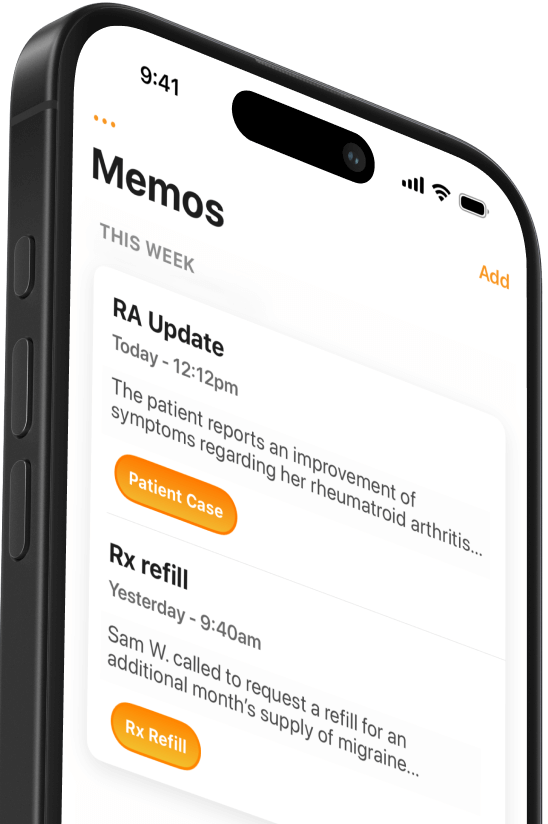Three approaches to better patient-physician communication
Frameworks like AIDET, RESPECT, and Partnership help doctors connect with patients—offering simple ways to build trust in busy clinics.


Popular articles
One of a physician's most underrated skills is the ability to communicate effectively and compassionately with patients. While most physicians have valuable experience from years of clinical work, few receive formal communication training after medical school.
A rapidly changing healthcare environment also requires new skills from providers. Clinical work today demands increasing productivity while offering less time with each patient. Meanwhile, healthcare’s administrative burden poses new challenges for physicians juggling administrative tasks with genuine patient interactions.
Whether you’re a new resident or a seasoned attending physician, it’s valuable to ask how physicians can communicate with patients more effectively in a clinical setting.
Models for Patient Communication
Let’s examine three approaches to patient-physician communication designed to improve patient satisfaction, reduce the likelihood of litigation, and improve patient outcomes.
1. The Partnership Model
The partnership model is a simple concept used in countless care settings. The basic idea is that patients should be full-fledged partners of the healthcare delivery team.
As a provider, partnering with patients means using a participatory conversation style in which you and the patient spend equal time talking. This approach aims to increase patient involvement in their health care through negotiation and consensus-building.
2. AIDET Patient Communication
Developed by Studer Group, AIDET is a framework for helping healthcare professionals communicate with patients in a way that decreases patient anxiety, increases compliance, and improves clinical outcomes.
The framework uses five simple steps:
- Acknowledge: Greet the patient by name. Make eye contact, smile, and acknowledge family and friends in the room.
- Introduce: Introduce yourself with your name, skill set, professional certification, and experience.
- Duration: Provide an accurate time expectation for tests and physician arrival and identify the next steps. When this is not possible, provide a time when you will update the patient on progress.
- Explanation: Explain what to expect next, answer questions, and let the patient know how to contact you.
- Thank you: Thank the patient and family. You might thank them for choosing your hospital or for their communication and cooperation. Thank family members for being there to support the patient.
Remember that AIDET is not a script. Instead, it offers a consistent way to incorporate best practices in patient-physician communication.
3. The RESPECT Model
The RESPECT Model is widely used to promote physicians’ awareness of their cultural biases and develop their rapport with patients from different cultural backgrounds. Consider which of these areas might be a gap in your patient communication style.
Rapport
- Connect on a social level
- See the patient’s point of view
- Consciously attempt to suspend judgment
- Recognize and avoid making assumptions
Empathy
- Remember that the patient has come to you for help
- Seek out and understand the patient’s rationale for her behavior or illnesses
- Verbally acknowledge and legitimize the patient’s feelings
Support
- Ask about and try to understand barriers to care and compliance
- Help the patient overcome barriers
- Involve family members if appropriate
- Reassure the patient you are and will be available to help
Partnership
- Be flexible about issues of control
- Negotiate roles when necessary
- Stress that you will be working together to address medical problems
Explanations
- Check often for understanding
- Use verbal clarification techniques
Cultural competence
- Respect the patient and their culture and beliefs
- Understand that ethnic or cultural stereotypes may define the patient’s view of you
- Be aware of your own biases and preconceptions
- Know your limitations in addressing medical issues across cultures
- Understand your style and recognize when it may not be working with a given patient
Trust
- Self-disclosure may be an issue for some patients who are not accustomed to Western medical approaches
- Take the necessary time and consciously work to establish trust
Communicating Effectively with Patients
If you’re a physician interested in improving your patient communication skills, you might enjoy this 2024 JAMA Series, Communicating Medicine. Patient-physician communication is an age-old topic, but it still benefits from fresh perspectives. Most doctors will want to attend training to integrate these approaches successfully. Research shows workshops, seminars, and other full-day training are the most effective ways to improve communication skills. Check what programs your professional organizations offer, then focus on applying what you learn in your clinical practice.
Related Articles


We Get Doctors Home on Time.
Contact us
We proudly offer enterprise-ready solutions for large clinical practices and hospitals.
Whether you’re looking for a universal dictation platform or want to improve the documentation efficiency of your workforce, we’re here to help.





